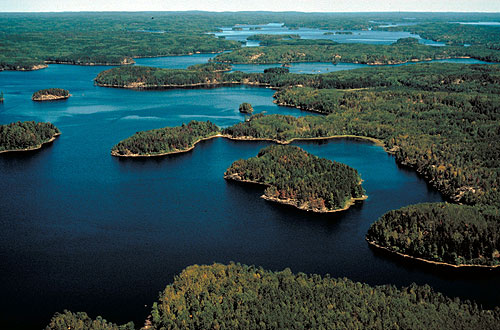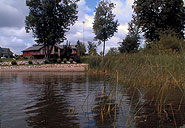




Steering Committee Members
- Nick Schmal, Vice-chair, U.S. Forest Service
- Mike Staggs, Chair, Wisconsin Department of Natural Resources
- Kate Zurlo-Cuva, Gathering Waters
- Neil Kmiecik, Great Lake Indian Fish and Wildlife Commission
- Debbie Bruce, Illinois Department of Natural Resources
- Bill James, Indiana Department of Natural Resoures
- Joe Larscheid, Iowa Department of Natural Resources
- Jim Dexter, Michigan Department of Natural Resources
- Gary Whelan, Michigan Department of Natural Resources
- Erin McDonough, Michigan United Conservation Clubs
- Michael Duval, Minnesota Department of Natural Resources
- Dirk Peterson, Minnesota Department of Natural Resources
- Greg Power, North Dakota Department of Fish and Game
- John Lott, South Dakota Game, Fish and Parks
- Todd Turner, U.S. Fish and Wildlife Service
- John Rothlisberger, U.S. Forest Service
- Leon Carl, U.S. Geological Survey
- Barbara Pardo, Upper Mississippi River and Great Lakes Joint Venture
- Earl Cook, Wisconsin Association of Lakes
 Glacial lakes (lakes formed by glacial activity) are a common feature on the Midwestern landscape. From small, productive potholes to the large windswept walleye “factories”, glacial lakes are an integral part of the communities within which they are found and taken collectively are a resource of national importance. Local economies depend on their fisheries and recreation value. Communities sometimes rely on them for dependable sources of water. Lakeshore property is more valuable than land off water. Despite this value, lakes are commonly treated more as a commodity rather than a natural resource susceptible to degradation. Often viewed apart from the landscape within which they occupy, human activities on land – and in water – have compromised many of these systems. These threats can be grouped as the three C's: Corn, Cabins, and Concrete.
Glacial lakes (lakes formed by glacial activity) are a common feature on the Midwestern landscape. From small, productive potholes to the large windswept walleye “factories”, glacial lakes are an integral part of the communities within which they are found and taken collectively are a resource of national importance. Local economies depend on their fisheries and recreation value. Communities sometimes rely on them for dependable sources of water. Lakeshore property is more valuable than land off water. Despite this value, lakes are commonly treated more as a commodity rather than a natural resource susceptible to degradation. Often viewed apart from the landscape within which they occupy, human activities on land – and in water – have compromised many of these systems. These threats can be grouped as the three C's: Corn, Cabins, and Concrete.Corn (Agriculture) Agriculture is a dominant land use in much of this partnership’s geography, topping 60 percent of land use in seven of the 11  ecoregions (an ecoregion is a recurring pattern of ecosystems associated with characteristic combinations of soil and landform that characterize that region). Lakes can be found in all eight states that are still suffering from the poor soil conservation practices of an earlier time. Further, previous soil and water conservation gains are being lost as lands once retired to perennial vegetation (e.g., acres enrolled in Conservation Reserve Program) are being tilled again with today’s favorable biofuel economics. An estimated 3.5 million acres or 40% of all CRP acres are scheduled to expire in the next three years in MGLP states. Returning a majority of these acres to row crops will have an effect on water quality, and subsequently fish habitat. ecoregions (an ecoregion is a recurring pattern of ecosystems associated with characteristic combinations of soil and landform that characterize that region). Lakes can be found in all eight states that are still suffering from the poor soil conservation practices of an earlier time. Further, previous soil and water conservation gains are being lost as lands once retired to perennial vegetation (e.g., acres enrolled in Conservation Reserve Program) are being tilled again with today’s favorable biofuel economics. An estimated 3.5 million acres or 40% of all CRP acres are scheduled to expire in the next three years in MGLP states. Returning a majority of these acres to row crops will have an effect on water quality, and subsequently fish habitat.Cabins (Development) Much of the development in the Midwest is focused on lakes. While some areas of the region actually lost population in recent years,  lake-rich counties, especially in forested ecoregions are seeing dramatic increases both in terms of year-round and seasonal residents. Projections for future growth show this trend will continue. As building occurs around lakes, the footprint of development and the activities that go with them (e.g., native vegetative buffers replaced with “city-scaped” lawns, shallow-water boating, the use of large docks and the removal of fish habitat) combine to have adverse impacts to fish habitats and water quality. lake-rich counties, especially in forested ecoregions are seeing dramatic increases both in terms of year-round and seasonal residents. Projections for future growth show this trend will continue. As building occurs around lakes, the footprint of development and the activities that go with them (e.g., native vegetative buffers replaced with “city-scaped” lawns, shallow-water boating, the use of large docks and the removal of fish habitat) combine to have adverse impacts to fish habitats and water quality.Concrete (Urban impervious surfaces) Impervious surfaces—roads, rooftops, and parking lots—in this region’s urban areas have dramatic impacts on lakes. Similar to drain  tiles in farm fields, impervious surfaces decrease the amount of land available to filter storm water. Direct discharge of storm water into lakes carries nutrients and other pollutants into these systems. Excessive nutrients can increase algae blooms resulting in decreased rooted aquatic plants—fish habitat— by decreasing water clarity. Four ecoregions exceed 4% imperviousness, with 9.1% of the Central Cornbelt Plains ecoregion in an impervious state. Watersheds in major metropolitan areas such as Minneapolis, Madison, and Detroit far exceed these levels, making water quality a major impediment to sustainable fish habitat. Photo courtesy twincitiesphotography.com tiles in farm fields, impervious surfaces decrease the amount of land available to filter storm water. Direct discharge of storm water into lakes carries nutrients and other pollutants into these systems. Excessive nutrients can increase algae blooms resulting in decreased rooted aquatic plants—fish habitat— by decreasing water clarity. Four ecoregions exceed 4% imperviousness, with 9.1% of the Central Cornbelt Plains ecoregion in an impervious state. Watersheds in major metropolitan areas such as Minneapolis, Madison, and Detroit far exceed these levels, making water quality a major impediment to sustainable fish habitat. Photo courtesy twincitiesphotography.comOther Threats Threats to sustainable fish habitat in Midwest Glacial Lakes include: • Legacy of logging and the loss of large woody habitat • Invasive species • Cumulative impacts of small habitat losses • Human-induced climate change A Strategic Conservation Partnership Many good conservation efforts are occurring in every state, however, the coordination of programs and exchange of information and  successful actions does not occur to the fullest extent possible. This partnership is developing a regional strategy for addressing aquatic habitat protection and restoration in glacial lakes. Benefits of such an approach are many, not the least of which will be the first regionally based assessment of glacial lakes. This assessment results will allow us to focus conservation activities and resources in areas that make the greatest use of limited funds. The partnership provides a forum for sharing programs, strategies, and techniques that have proven their worth but have not yet been applied at a larger, regional scale. successful actions does not occur to the fullest extent possible. This partnership is developing a regional strategy for addressing aquatic habitat protection and restoration in glacial lakes. Benefits of such an approach are many, not the least of which will be the first regionally based assessment of glacial lakes. This assessment results will allow us to focus conservation activities and resources in areas that make the greatest use of limited funds. The partnership provides a forum for sharing programs, strategies, and techniques that have proven their worth but have not yet been applied at a larger, regional scale. |
